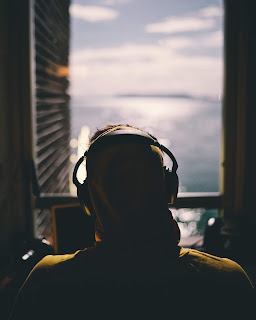Perfect Timing
Playing the right rhythms separates the good players from the bad. Playing with the right timing separates the great players from the good players.
It's kind of like inviting some friends over to your house. You decide they should come over at 2:30. The expectation is set. If your friends show up at 2:40, then you have ten extra minutes to clean up, hence, the relaxation. If they show up at 2:15, it's a bit of a surprise, maybe unsettling, because you lost 15 minutes that you were expecting to have. If they show up right on time, then it's as expected, and all is right with the world. The same is true with the timing of our notes.
How can you tell if your timing is early, late, or on time?
Metronomes help. The more you use a metronome, the easier it gets to tell if you were off or not. I've already written a few blogs on using a click that you can find here. We all have the same brain power and muscles to play with a metronome as professionals. The difference is professionals can recognize when they are getting off track much sooner than the average person and anticipate correcting the mistakes. It's all about how quickly can you recognize if you're in time or not and making correct adjustments. The more you do it, the easier it gets. Once it's easy, you can intentionally place your notes a little late to create that relaxed feeling.
You can also record yourself. Then you can literally zoom in on a timeline to see where your notes landed. I believe recording yourself is a really good practice because you hear things differently when you're not in the hot seat. Sometimes the ideas in my head don't translate as well when I listen back to myself play. Or maybe I notice something about my playing that I wouldn't have noticed otherwise.
Ask for feedback. Ask someone to listen to you play. That someone should be someone that has played with a click a lot. Also, it should be someone you trust to tell you the truth.
You may understand these concepts. You may even be able to demonstrate these concepts. But take an honest look at your playing to see if it's perfectly in time 100% of the time. I've noticed a pattern in my own playing when I just barely start to get off track. It usually happens every first measure of a new beat that I play. I've gotten pretty good at adjusting it right away, but if I focus on it, I can nail the first measure perfectly. The problem is I don't always think about it until I notice I'm getting off beat. So take time to have perfect time.
You can also record yourself. Then you can literally zoom in on a timeline to see where your notes landed. I believe recording yourself is a really good practice because you hear things differently when you're not in the hot seat. Sometimes the ideas in my head don't translate as well when I listen back to myself play. Or maybe I notice something about my playing that I wouldn't have noticed otherwise.
Ask for feedback. Ask someone to listen to you play. That someone should be someone that has played with a click a lot. Also, it should be someone you trust to tell you the truth.
You may understand these concepts. You may even be able to demonstrate these concepts. But take an honest look at your playing to see if it's perfectly in time 100% of the time. I've noticed a pattern in my own playing when I just barely start to get off track. It usually happens every first measure of a new beat that I play. I've gotten pretty good at adjusting it right away, but if I focus on it, I can nail the first measure perfectly. The problem is I don't always think about it until I notice I'm getting off beat. So take time to have perfect time.






Comments
Post a Comment